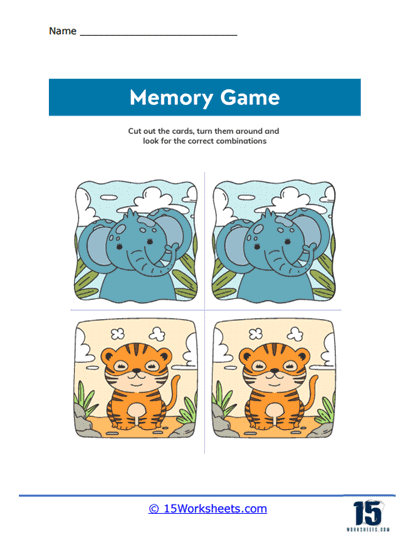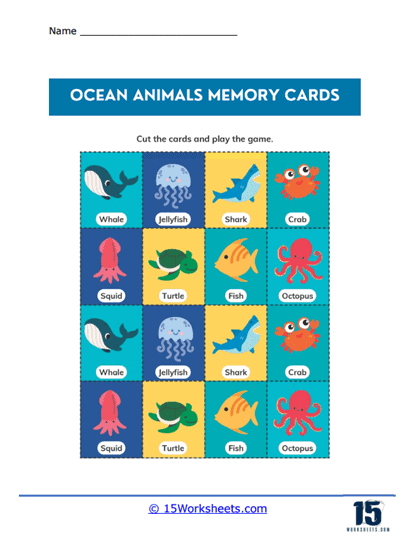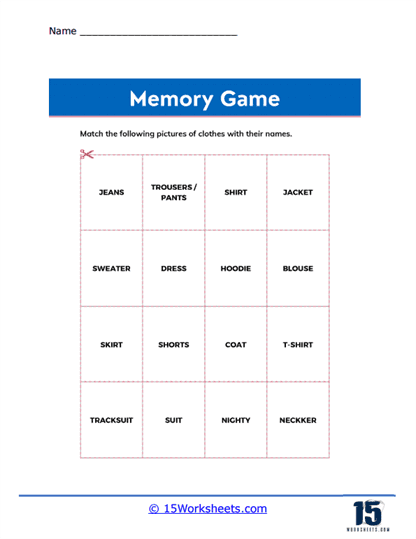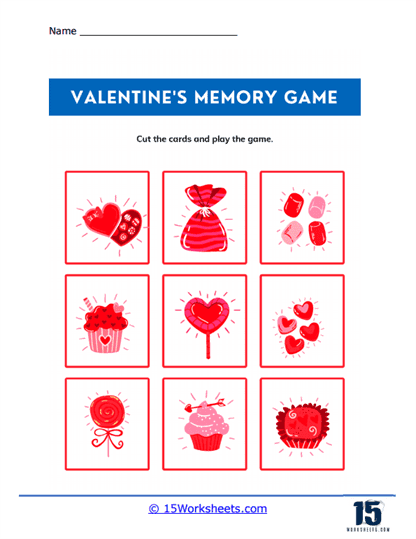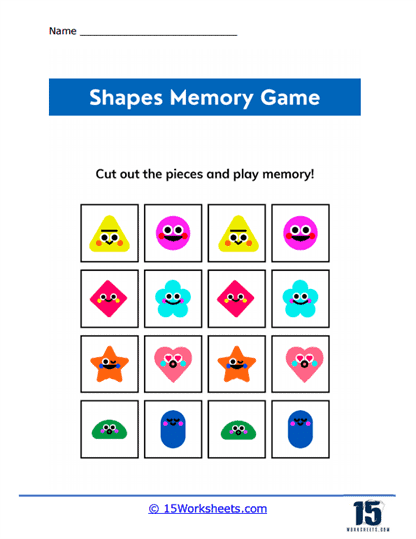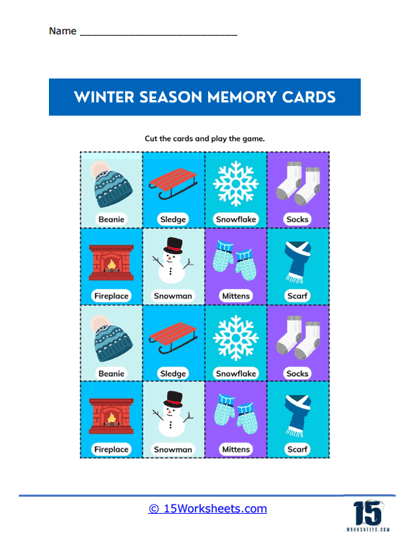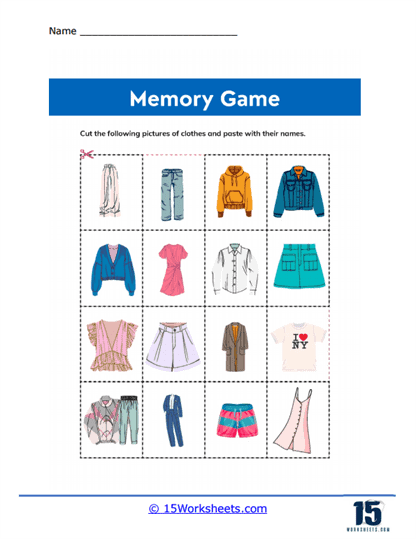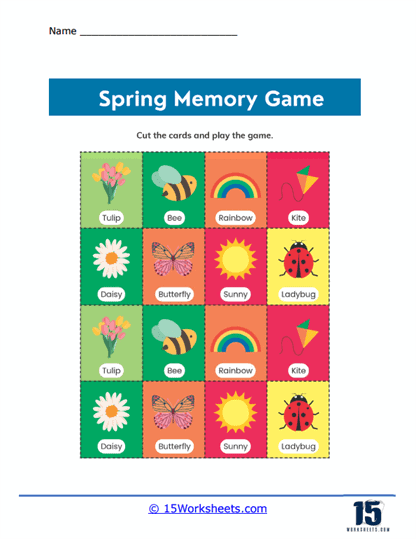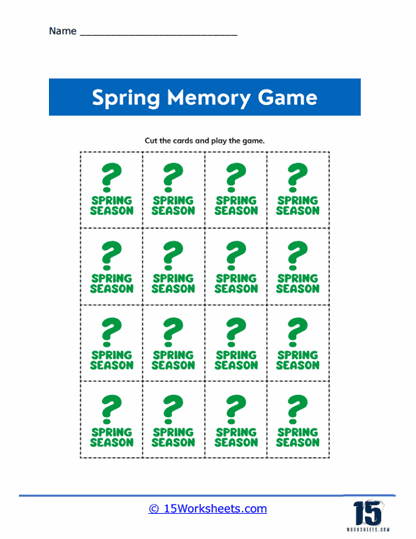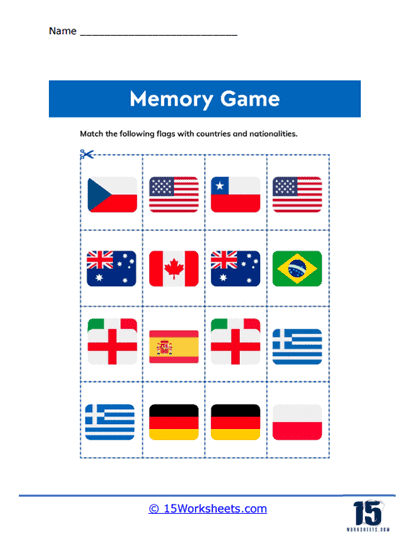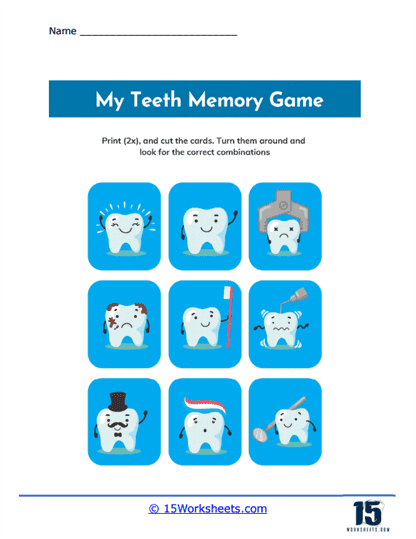Visual Memory Worksheets
All About These Worksheets
Visual memory is a fascinating and vital aspect of our cognitive abilities, deeply embedded in the way we interact with the world around us. At its core, visual memory refers to the brain’s remarkable capacity to store and recall information that is presented visually. Whether it’s the shape of a friend’s face, the vibrant color of a sunset, or the specific layout of a familiar street, visual memory serves as the bridge between our visual experiences and how we retain and make sense of them. It is much more than just remembering pictures or images; it is the mental scaffolding that helps us reconstruct scenes, objects, and spatial arrangements with remarkable precision.
To understand the importance of visual memory, imagine how essential it is in everyday life. From the moment we wake up and recognize our surroundings to the subtle cues that guide us through social interactions, visual memory is constantly at work. Consider the simple task of recognizing someone we know. Our brains must quickly compare the visual information of the person’s face-its contours, color, and distinguishing features-against a stored memory of their appearance. Without visual memory, we would be lost in a sea of unfamiliarity, unable to identify even those closest to us.
But visual memory is not just limited to recognizing people. It plays a critical role in reading, as well. As we read words on a page, our visual memory helps us remember the shapes and sequences of letters and words, turning abstract symbols into meaningful language. This ability allows us to not only read with fluency but also comprehend and recall what we’ve read, linking words to concepts and images in our minds. Additionally, visual memory is fundamental to navigation. Whether it’s finding our way through a city, recalling the layout of a room, or remembering where we last placed an important object, our brain relies heavily on this ability to process and store spatial information.
Given the undeniable importance of visual memory in nearly every aspect of daily life, it’s not surprising that educators and cognitive specialists have developed tools to strengthen this skill. One such tool is the visual memory worksheet. Designed with a specific purpose in mind, these worksheets are more than just exercises; they are structured activities aimed at enhancing the brain’s capacity to recall visual information. These worksheets often feature tasks like identifying differences in two similar images, recalling sequences of objects or colors, or remembering patterns that flash on a screen for a brief moment. Each activity is crafted to challenge the brain in a way that exercises and sharpens the pathways involved in visual recall.
For students, particularly those who are strong visual learners, visual memory worksheets can be invaluable. Visual learners tend to process information most effectively when it is presented in a visual format, such as through images, diagrams, or charts. However, even for students who don’t rely as heavily on visual cues, developing strong visual memory can aid in overall cognitive development. It enhances their ability to process and retain information across various subjects, whether it’s memorizing spelling words, learning geometric shapes, or recalling details from a science experiment.
One of the most significant benefits of regularly practicing with visual memory worksheets is the improvement in cognitive flexibility. As the brain strengthens its visual memory, it becomes more adept at adapting to new information and recalling previously learned material in different contexts. This kind of cognitive flexibility is essential for problem-solving, critical thinking, and creativity-all of which are crucial skills in academic and professional environments.
Visual memory is not a static ability. Like any cognitive skill, it can be improved with consistent practice. Visual memory worksheets provide that structured practice, offering opportunities to gradually increase the complexity of tasks as one’s skill improves. This incremental approach ensures that learners of all ages and abilities can benefit from the exercises, whether they are just beginning to develop their visual memory or looking to refine an already well-developed skill.
In today’s fast-paced, visually driven world, the ability to process and remember visual information is more important than ever. We are constantly bombarded with visual stimuli-advertisements, social media posts, websites, and news articles, to name a few. Strengthening visual memory can help individuals sift through this deluge of information, helping them focus on what matters most and recall important details when needed. In this way, visual memory is not just a cognitive skill; it becomes a survival tool for navigating the complexities of modern life.
Types of Problems on These Worksheets
Image Recall – To develop the ability to remember specific details of an image. Students are shown an image for a set duration, after which they must reproduce it from memory or answer questions about specific details. This exercise reinforces attention to detail and the ability to store visual data for short-term recall.
Pattern Reproduction – To enhance memory of sequences and patterns. Students view a pattern (e.g., a sequence of colored blocks) and are later asked to reproduce it. Recognizing and recalling patterns is vital for many tasks, from reading and math to understanding social cues.
Missing Object – To train the eye and mind to recognize changes or discrepancies. Students are presented with two seemingly identical images. They must identify subtle differences between them. This sharpens observational skills and the ability to remember and compare visual details.
Sequential Memory – To improve memory of events or items in order. Students are shown a series of images in a particular sequence. Later, they’re asked to arrange shuffled images in the original order. This develops the ability to remember sequences, crucial for tasks like following multi-step instructions.
Match-Up – To strengthen association skills and detailed recall. Students are given a set of paired cards, placed face-down. They must turn over two cards at a time, trying to find matching pairs, relying on memory to remember the location of each card. This classic memory game enhances spatial memory and the ability to associate and recall paired information.
Maze Puzzles – To develop spatial memory and visual problem-solving. Students navigate a maze, remembering dead-ends and correct paths. Mazes challenge both memory and visual-spatial reasoning, teaching students to visualize paths and solutions.
Visual Chunking – To improve the ability to group information. Students might be shown a cluttered image or a large amount of visual data and asked to group similar items or patterns. Chunking aids in memory by breaking down information into manageable, memorable units.
Visual Storytelling – To enhance narrative visual memory. Students are shown a series of images that tell a story. They must later recall or rearrange the events in the correct order. This exercise helps in remembering sequences in a narrative format, aiding in tasks like story comprehension or recalling events.
Shadow Matching – To develop the ability to recognize objects from different visual perspectives. Students are shown objects and their corresponding shadows and must match them correctly. This promotes understanding of shapes, spatial orientation, and perspective.
Color Memory – To enhance recall of specific colors and their nuances. Students may be asked to remember a sequence of colors, reproduce a specific shade, or match colors based on memory. Recognizing and recalling colors and their nuances hones detailed visual memory.
Benefits of Visual Memory Worksheets
Visual memory is an essential cognitive skill that supports academic success and daily functioning. Through targeted exercises like visual memory worksheets, students can strengthen their ability to store and recall visual information, which plays a critical role in various subjects. Subjects such as geometry, reading comprehension, and science require the ability to remember shapes, patterns, and visual data, all of which benefit from improved visual memory. As students enhance this skill, they experience a boost in their academic performance across multiple disciplines.
In addition to academic gains, visual memory worksheets improve concentration. These exercises require focused attention, which trains the brain to block distractions and stay engaged. This enhanced ability to concentrate is invaluable in academic settings and in everyday tasks that require prolonged focus. By practicing visual memory exercises regularly, students develop the mental stamina needed for more effective learning and problem-solving.
For visual learners, who process information best when it’s presented visually, these worksheets are particularly beneficial. Unlike traditional learning methods that may not cater to their strengths, visual memory exercises provide a more intuitive approach. By engaging with material through images and patterns, visual learners are better able to grasp complex concepts, which can significantly improve their comprehension and retention.
Beyond school, strong visual memory is useful in everyday situations, such as remembering directions, recognizing faces, or recalling items on a list. These real-world applications highlight how essential visual memory is for navigating daily life efficiently. Strengthening this skill can also support success in careers that rely heavily on spatial awareness and attention to detail, such as architecture or design.


